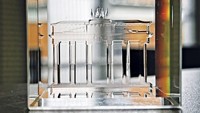Advertisement
Grab your lab coat. Let's get started
Welcome!
Welcome!
Create an account below to get 6 C&EN articles per month, receive newsletters and more - all free.
It seems this is your first time logging in online. Please enter the following information to continue.
As an ACS member you automatically get access to this site. All we need is few more details to create your reading experience.
Not you? Sign in with a different account.
Not you? Sign in with a different account.
ERROR 1
ERROR 1
ERROR 2
ERROR 2
ERROR 2
ERROR 2
ERROR 2
Password and Confirm password must match.
If you have an ACS member number, please enter it here so we can link this account to your membership. (optional)
ERROR 2
ACS values your privacy. By submitting your information, you are gaining access to C&EN and subscribing to our weekly newsletter. We use the information you provide to make your reading experience better, and we will never sell your data to third party members.
Analytical Chemistry
Spotting Nascent Protein Crystals
Optical technique reduces background noise and could cut screening times and costs
by Carmen Drahl
October 15, 2008

A microscopy technique that harnesses a special optical effect could detect smaller protein crystals than can any other optical method. The technique may reduce the time and expense required to screen crystallization conditions, a major bottleneck in protein structure determination by X-ray crystallography.
Traditional high-throughput crystal screens can find only protein crystals that are at least micrometer-sized. Some screens also have a significant background signal due to fluorophores used in detection. Garth J. Simpson and coworkers at Purdue University have shown that their microscopy technique, based on a nonlinear optical effect called second harmonic generation (SHG), effectively eliminates background noise in crystal screens (J. Am. Chem. Soc., DOI: 10.1021/ja805983b). They estimate that their technique can discern crystals with dimensions in the 100-nm range. This improvement in resolution would reduce the amount of protein needed per screen and allow earlier detection without the need for fluorophores.
SHG occurs when intense laser light interacts with certain ordered materials, including some crystals. In such cases, some photons from the laser combine to form new photons with twice the energy of the originals. The Purdue team outfitted a microscope with a laser and detected crystals of two different proteins via their telltale SHG signals. "The advantage of our technique is its selectivity," Simpson says. Randomly oriented protein aggregates and solvent molecules cannot give off that signal, which eliminates background noise, he explains. The technique won't work on highly symmetrical protein crystals because of the physical principles governing SHG, but such crystals make up less than 1% of crystals that have been characterized, he adds.
"Since the majority of protein crystal classes should be SHG active, there is the potential for widespread adoption of this idea to screen for crystals," says bioanalytical chemist Paul S. Cremer of Texas A&M University.
"The fact that this work is performed with a standard laser system will make it highly attractive to the scientific community," adds spectroscopist Franz M. Geiger of Northwestern University.




Join the conversation
Contact the reporter
Submit a Letter to the Editor for publication
Engage with us on Twitter